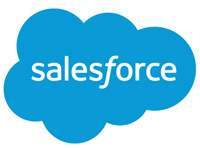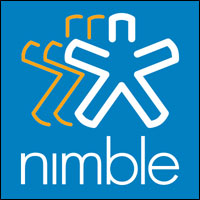
Salesforce this week launched Salesforce Essentials, a collection of intelligent apps targeting small and mid-sized businesses.
Built on the Salesforce Lightning framework, Essentials offers a consumer-like experience optimized for any device. Relevant information is displayed on one unified console, and Lightning enables drag-and-drop customization.
Sixty-six percent of the SMB staff who participated in Salesforce research indicated they were personally responsible for at least three areas of their business, noted Marie Rosecrans, SVP for SMB marketing at Salesforce.
Only 26 percent of their organizations had one or more in-house IT staff, “making it difficult to implement new technologies,” she told CRM Buyer.
“Essentials is easy to try, set up, use and maintain, making it possible for every small business to tap into the power of the Salesforce Platform,” Rosecrans said.
“Salesforce started as a product for SMBs,” recalled Rebecca Wettemann, VP of research at Nucleus Research.
“Essentials brings it back to its roots,” she told CRM Buyer.
However, Salesforce Essentials caps the number of users, Wettemann pointed out, “so larger enterprises looking for a more streamlined — or cost-effective — Service or Sales Cloud license from Salesforce won’t find it in Essentials.”
The 2 Faces of Essentials
Sales Cloud Essentials, with the Lightning Sales Console, gives sales reps a complete view of customers, including activity history, key contacts, customer communications, and internal account discussion in one place. This information is accessible from any device using the Salesforce Mobile App.
Sales Cloud Essentials also offers reports and dashboards.
Service Cloud Essentials lets small service teams set up help desks instantly in order to provide faster, more personalized customer service.
The Lightning Service Console gives service agents a 360-degree view of customer interactions in one unified desktop view, regardless of how customers reach out — through email, phone, Twitter or Facebook. The Service Cloud Mobile app lets agents provide personalized service from anywhere.
Salesforce Essentials incorporates Einstein Activity Capture, which automatically adds relevant emails and calendar information to the appropriate records in Salesforce.
All captured messages provide a history of engagement, so sales people have the necessary context to work with customers.
Customers can use the Small Business Hub on the AppExchange to access apps that integrate with Essentials.
“This offering by Salesforce packages a suite of commonly needed solutions for SMBs at one price point,” noted Cindy Zhou, principal analyst at Constellation Research.
“I am a fan of this type of packaging, which makes the customers’ lives easier from a cost and administrative perspective,” she told CRM Buyer.
Ease of Setup
Trailhead, Salesforce’s free online learning platform, provides setup wizards and other tools for using Essentials.
Trailhead-driven setup “is the real killer feature,” Nucleus’ Wettemann said. It cuts the time and expertise needed to deploy Sales and Service Cloud by more than 50 percent.
The Salesforce Essentials apps are available for US$25 per user per month.
“The price point’s appropriate for the package of solutions SMBs will receive,” Zhou said. “Buying all these solutions individually would be costlier and require more administrative effort, where SMBs are typically resource-challenged.”
Essentials “is the same trusted CRM platform used by 83 percent of Fortune 500 companies, optimized for small businesses,” Salesforce’s Rosecrans noted.
Small Business Hub Apps
There are six apps in the Salesforce Small Business Hub: Hellosign for Salesforce; Xactly Incent Express; Slack; Dropbox for Salesforce; Mailchimp for Salesforce; and CodeScience.
Taken together they enable sellers to track, manage, and market to customers, Zhou said. For internal enablement, some of them also “provide SMBs the ability to manage post-deal incentive competition.”
Users of older Salesforce applications may have to gear up for the future.
“Desk.com and SalesforceIQ customers will have to plan for their products’ retirement,” Wettemann observed. However, “they now have a more effective way to grow into the Salesforce footprint.”
















































Social Media
See all Social Media